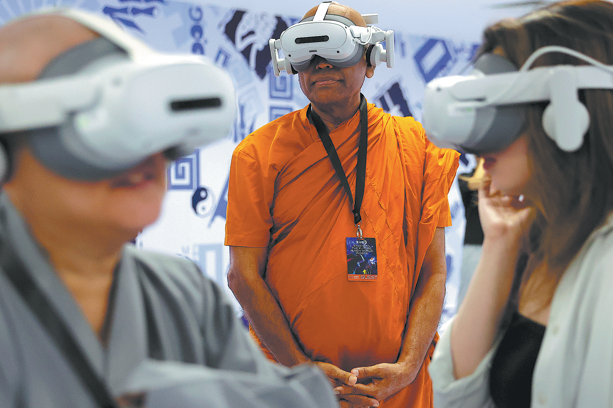US election: Too soon to call
By HENG WEILI in New York and ZHAO HUANXIN inWashington | China Daily Global | Updated: 2020-11-04 23:43

President Donald Trump won Florida and Texas in the US presidential election on Tuesday but was in an uncertain race with Democrat Joe Biden in Pennsylvania and North Carolina, two states with an extended deadline for mail-in ballots, potentially lengthening an election that already has seen a massive turnout.
In the battle for the 270 electoral votes needed to win the White House, Biden won Arizona, a state that Trump won in 2016. He also took the rich prize of California, with 55 electoral votes, and was the winner in the reliably Democratic states of Washington and Oregon.
According to Politico.com, Trump was leading in North Carolina by 1.2 percentage points as of 10:50 pm ET. North Carolina, a state that Trump won in 2016, will accept ballots until Nov 12. Pennsylvania, where Trump was ahead by 12 points, will accept ballots up to three more days.
The 2020 electoral map was shaping up surprisingly similar to the one in 2016, when Trump defeated Hillary Clinton.
Trump depended on getting out the vote on Tuesday, expressing mistrust of mail-in balloting. Early voting trends showed more registered Democrats voting before Election Day.
Also a factor Tuesday was the order in which states counted the votes — same-day votes or early ones. That resulted in some pinball-type moves on the electoral map.
The handling of the COVID-19 pandemic has been Biden's main campaign theme, while the president has blistered the subsequent lockdowns that decimated the economy, which he routinely blamed on Democrats.
The election for the most part, considering how divided the country has been, went off mostly peacefully. Concerns about violence in major cities, many of which saw stores boarded up, hadn't materialized as of 10:30 pm ET.
Earlier Tuesday, in Washington DC, Election Day proceeded in a fashion that has been transformed by the COVID-19 pandemic. Caution signs were posted around polling venues, with poll workers wearing masks, and people standing several feet apart.
Throughout the capital, most polling places had sparse lines.
"We've not seen major systemic problems or attempts to obstruct voting for voters," said Kristen Clarke, president of the Lawyers Committee for Civil Rights Under Law. "The problems we have seen have for the most part been isolated and sporadic."
Voters trickled in to a polling station in Ward 3 in Washington DC. The venue at the Cleveland Public Library had received 190 voters by 3 pm, five hours before polls were set to close, according to a staffer who identified herself as Rebecca.
On Connecticut Avenue, a 20-minute walk from the polling center, several stores were boarded up, in anticipation of possible protests. The same buildings were boarded up several months ago, when some protests against police brutality turned violent and looting ensued.
Voters on Tuesday also decided which political party will control the US Congress for the next two years. Currently, the Democrats hold a 232-197 majority in the lower chamber, while Republicans hold a 53-47 seat majority in the Senate.
In a key congressional race, Republican Senate Majority Leader Mitch McConnell of Kentucky fended off a challenge by Democrat Amy McGrath.
Republican Senator Lindsey Graham of South Carolina, a close Trump ally, fought off a fierce challenge to hang onto his seat.
The parties traded a pair of seats in other early results: Democratic former Colorado Governor John Hickenlooper defeated incumbent Senator Cory Gardner, and in Alabama, Republican Tommy Tuberville beat Senator Doug Jones.
At least 102 million voters had cast early ballots either through mail-in voting or in-person before the first poll sites opened early Tuesday, according to the US Elections Project at the University of Florida. That number represented 73 percent of the electorate.
The voter turnout for the 2020 presidential election was massive by recent standards. But it didn't come close to surpassing the record set in 1876.
That year, 81.8 percent of eligible American voters went to the polls.
The winner was Republican Rutherford B. Hayes, though he received fewer votes than his Democratic opponent, Samuel Tilden. Because 20 electoral votes were disputed, neither won a majority of the Electoral College. The election went to the House of Representatives, and Hayes was eventually declared the winner.
The Associated Press contributed to this story.
Contact the writers at hengweili@chinadailyusa.com























